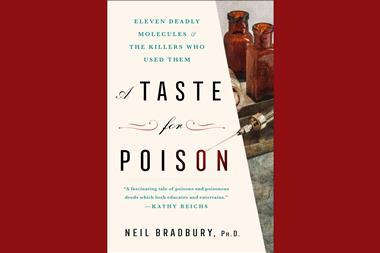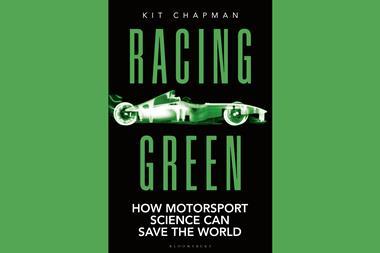Meera Senthilingam
This week, we go to war, with Michael Freemantle, who’s setting off sparks
Michael Freemantle
When I tell people that I write about the chemistry of the first world war, they often assume that I’m only interested in chemical warfare. I explain that poison gases were not the only chemicals used in the war. Explosives are also chemicals. Furthermore and just as important, chemistry played a critical role in the care of the sick and wounded.
I point out, for example, that morphine, a naturally occurring chemical, was widely used as a painkiller in casualty clearing stations and military hospitals. Troops disinfected trenches and latrines with chloride of lime, a chemical otherwise known as bleaching powder. Carbolic acid, tincture of iodine and other antiseptics were widely used to prevent and treat infections. And finally, surgeons employed chloroform, nitrous oxide or diethyl ether, all of them chemical compounds, as general anaesthetics while amputating limbs and carrying out other operations.

Many of these compounds have long histories. None more so than diethyl ether. This volatile, colourless liquid with a sweetish smell is often simply known as ether. The word ‘ether’ can be traced back to the 4th century BC when the Greek philosopher Aristotle proposed that ether should be added as a fifth element to the four classical elements: earth, water, air, and fire. He suggested that ether was the heavenly element that made up the stars and planets.
Let us now fast forward to the 16th century AD. In 1540, the German botanist and pharmacist Valerius Cordus carried out the first synthesis of ether. He did so by adding sulfuric acid to ethanol, a method that is still used today to prepare the liquid.
Just over three centuries later, in October 1846, two Americans publicly demonstrated the use of diethyl ether as a surgical inhalation anaesthetic. They were dentist William Morton, who administered the anaesthetic while surgeon John Collins Warren removed a tumour from the jaw of the unconscious patient, Edward Gilbert Abbott. They carried out the operation at Massachusetts General Hospital in Boston. After the operation, Abbott woke up and claimed that he felt no pain.
In the first world war, diethyl ether was employed as an anaesthetic either by itself or in combination with another anaesthetic such as chloroform. It was also used as an antiseptic in the early 1900s.
In February 1915, London surgeon Herbert Waterhouse reported in the British Medical Journal that he had been frequently employing ether as an antiseptic for more than five years. He described using the antiseptic to treat patients who had been admitted to hospital with severe septic gunshot wounds and a variety of other septic injuries.
In one case, a young bull had gored an old farmer and ripped him open from the middle of the back of his thigh to above his pelvis. The surgeon saw him five days later and noted that someone had applied a treacle poultice to the huge wound. He observed that:
‘His wound was greenish in colour and exceedingly fetid.’
The farmer’s temperature was high, his pulse feeble and intermittent, and he was muttering incoherently.
‘Turning him on his face, I poured ether into the long, deep, grooved wound, and allowed it to boil away, filling up the groove as the ether evaporated for some minutes. Nearly a pint of ether was thus employed. I then loosely packed the wound with sterile gauze soaked in ether, and directed that the wound should be sponged with ether twice daily. Within twenty four hours the patient’s condition was all that could be desired, and the wound healed rapidly.’
In the decades running up to the war, ether proved to be not only a useful anaesthetic and antiseptic, but also an excellent solvent for a wide range of substances, including fats, oils, waxes, and notably a form of nitrocellulose known as collodion. Collodion was a key ingredient of Cordite RDB, one of several types of cordite used by the British as a propellant in the war. The manufacturing process involved dissolving collodion and another explosive, nitroglycerine, in a mixture of diethyl ether and ethanol.

Nowadays, diethyl ether is widely used for a variety of purposes. But if you are thinking of using it in the laboratory or elsewhere, you should be aware of certain health and safety issues. Exposure to the vapour can irritate the eyes, skin, and throat and cause dizziness, drowsiness, and nausea. Ether is also highly flammable and an explosion hazard. Its vapour is heavier than air and can collect in closed spaces. A spark can cause as little as two per cent by volume of the vapour in air to explode and send a flame back to the liquid.
Meera Senthilingam
Science writer Michael Freemantle, starting fires there with the chemistry of diethyl ether. Now next week, the chemistry of life.
Kiki Sanford
Life is balance, a fine tuning of processes at the molecular level that allow an organism to either remain alive or slip from this mortal coil into death, but how do things that are alive keep from tipping toward death? How do they maintain that perfect equilibrium?
Meera Senthilingam
Find out in next week’s Chemistry in its Element. Until then, thank you for listening. I’m Meera Senthilingam.













No comments yet